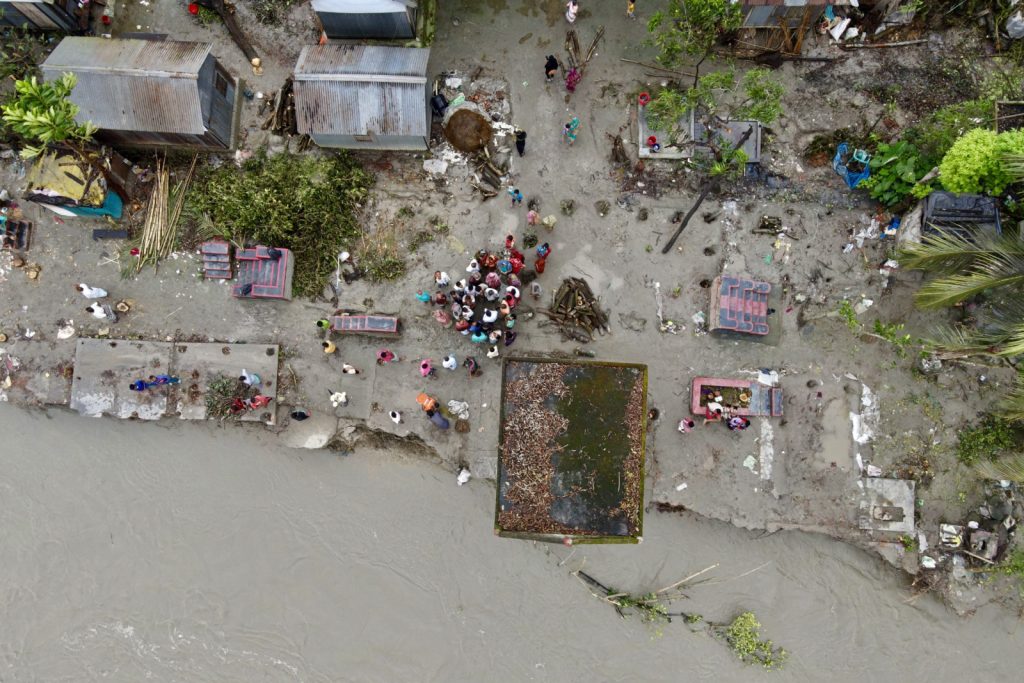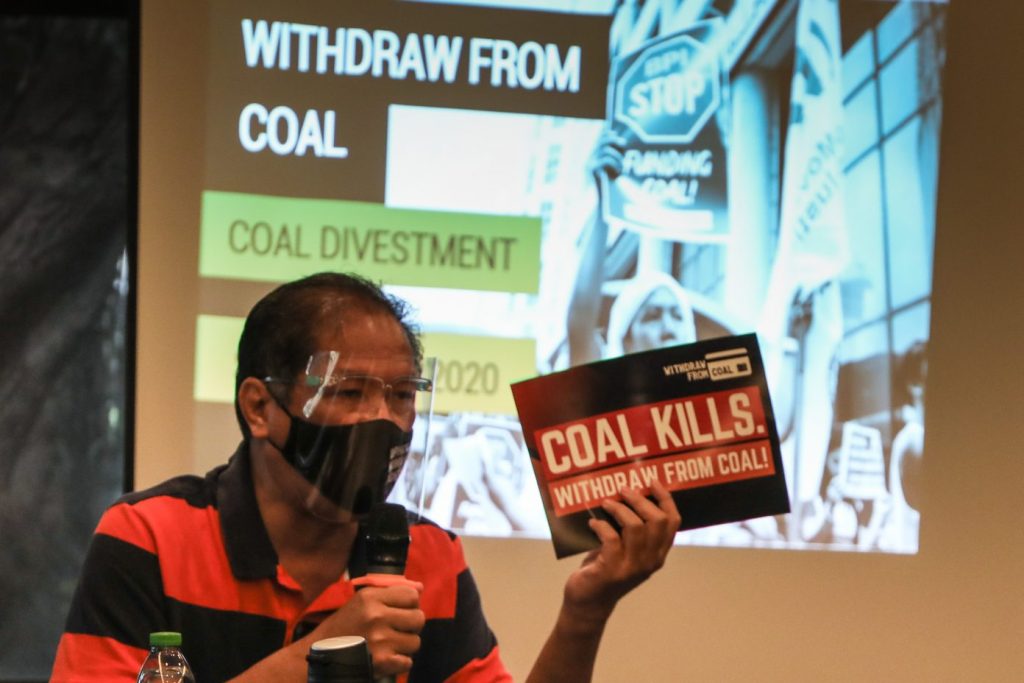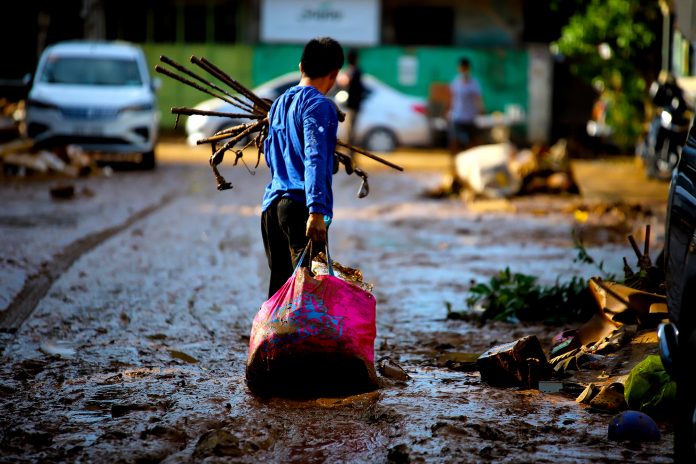Most Asia-Pacific countries are “insufficiently prepared” to face extreme weather events and natural disasters, which are growing in intensity and frequency due partly to climate change, according to a new study by a United Nations regional commission.
While the region suffers the worst consequences of climate change, it is also a key perpetrator – accounting for over half of the world’s greenhouse gas emissions – said the Bangkok-based UN Economic and Social Commission for Asia and the Pacific (ESCAP), releasing its “Race to Net Zero” report Monday.
Over the past 60 years, temperatures in the Asia-Pacific region have increased faster than the global mean.
“Six of the top 10 countries most affected by these disasters are in the Asia-Pacific region, where food systems are disrupted, economies damaged, and societies undermined,” ESCAP said.
The average annual economic losses across the region caused by natural and biological hazards are estimated at US$780 billion, which is forecast to rise to US$1.1 trillion in a moderate climate-change scenario and US$1.4 trillion in a worst-case scenario, according to Monday’s report.
The Asia-Pacific countries lack the sizable financial means to support adaptation and mitigation efforts and the data necessary to inform climate action. At the same time, existing infrastructure and services are insufficiently climate resilient, the report said.
UN Under-Secretary-General Armida Salsiah Alisjahbana, executive secretary of ESCAP, said the case for regional climate action in Asia and the Pacific is clear.
“In fact, just last month, the severe heat waves we experienced here in Bangkok and throughout the country have been described as the worst April heatwaves in Asian history,” Alisjahbana said at the report’s launch.
“These extreme temperatures also affected other countries such as Bangladesh, China, India, and Lao PDR … Climate change puts our region’s sustainable development in jeopardy.”
The report will guide and inform the 79th session of ESCAP next week, focusing on accelerating climate action for the first time.

According to a March report by the UN-related Intergovernmental Panel on Climate Change (IPCC), the Asia-Pacific region accounted for 57% of global emissions from fuel combustion in 2020, three-fifths of which was generated from coal.
The emissions have more than doubled since 1990, driven by the electricity and heating, manufacturing and construction, and transport sectors, ESCAP said.
According to the UN report, 85% of Asia and the Pacific’s primary energy supply comes from fossil fuels, while 60% of the region’s energy-related CO2 emissions come from coal and one-third from gas and oil.
The report said that to limit temperature rises to 1.5°C, oil and gas must be radically phased down by 2050 and coal wholly phased out.
27% of Asia and the Pacific’s CO2 emissions are from the transport sector. Overall transport emissions increased by 200% over the past 30 years, while transport demand is forecast to increase by 150% between 2015 and 2050 in the region.
Three-fourths of global emissions in manufacturing/construction are from the region, ESCAP said.
Only six countries have laws to tackle climate challenges
A large majority of 49 countries in the Asia-Pacific region have already made carbon neutrality pledges by 2022, with commitments varying from achieving carbon neutrality or net-zero carbon dioxide, to net-zero greenhouse gas emissions by mid-century.
ESCAP said the sum of countries’ actions to cut emissions and adapt to climate change “falls short of the required ambition.”
The report said a 16% increase by 2030 in greenhouse gas emissions from 2010 levels is forecast instead of the 45% reduction needed to keep warming within 1.5 degrees.
Sangmin Nam, director of the environment and development division at ESCAP, said the Asia-Pacific region lacked regional cooperation to “really speed up the action” under the Paris Agreement, unlike the European Union or the African Union.
“We don’t have such [a] regional party or regional cooperation. So, with this report, we try to identify some areas where regional cooperation, especially that can be supported by ESCAP.”
Nam said that while there are hundreds or thousands of climate priorities, “one of the key elements is for the countries to develop policies of their low carbon or net zero targets.”
“While 40 countries have already committed to a low carbon or net zero target, only six countries so far have developed their national laws accordingly,” Nam told Radio Free Asia, citing Australia, Fiji, Japan, Maldives, New Zealand, and South Korea.

China, the world’s largest greenhouse gas emitter, has committed to a 2060 target for carbon neutrality and has developed “a policy guidance document with no legal provisions.”
“It means countries need to develop internal regulations and policies,” he said.
Huda Ali Shareef, Maldives’ deputy ambassador to Thailand, said climate change impacts on the economies of the Pacific and small island developing states, and other lesser developed countries, are expected to be very high due to their ecological fragility.
“We need to strengthen multi-hazard early warning systems for everyone, and especially the focus on the communities that are most at risk,” she said, adding that such a system should facilitate regional cooperation.
Maldives is one of the lowest-lying countries in the world, facing an existential threat due to climate change, even though its contribution to greenhouse gas emissions is only 0.003% in the global share, she said.
“The Maldives is proud to be one of the six Asia Pacific countries, who has adopted a law on carbon neutrality,” she said.“On energy transition, Maldives will increase renewable energy share to 15% in the energy mix by 2030.”
However, she added that Maldives’ carbon neutrality pledge by 2030 depends on the level of international support received.
“Least developed countries and small island developing states in the region have received zero climate-related foreign direct investment since 2011,” she said.









